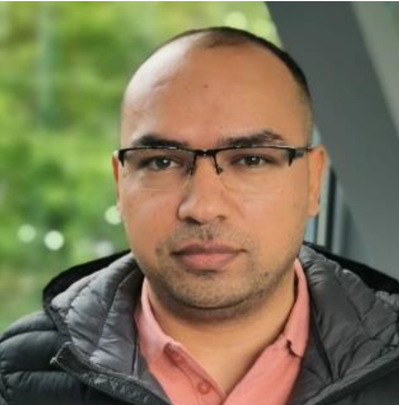题目:用于非常规计算的自旋霍尔纳米振荡器的挑战和进展讲座
时间:2024年5月22日(周三)15:00
地点:国际校区B1-c101
主讲人:Ahmad A. Awad

Ahmad A. Awad, has held the position of Associate Professor, since March 2023, at Tohoku University's Research Institute of Electrical Communication in Japan, he has also become from 2018, a permanent 1st research engineer at Gothenburg University, delving into magneto-optical characterization of stimulated spin dynamics. In 2014, he moved to the University of Gothenburg, Sweden, where he shifted focus and work on Spin Hall nanooscillators and stimulated spin dynamics for fundamental characterizations and non-conventional computing applications. A. A. Awad earned his Ph.D. in physics from the Autonomous University of Madrid, Spain, in 2012, specializing in high-frequency magnetization dynamics in magnetic and superconducting nanostructures. He continued with postdoctoral research in micromagnetics at Seoul National University in 2013. Awad is author and co-author of about 50 scientific publications and patents.
2012年获得西班牙马德里自治大学物理学博士学位,2013年首尔大学继续进行微磁学博士后研究,2014年起任瑞典哥德堡大学一级研究员,2023任日本东北大学电子通信研究副教授,长期从事自旋电子学研究,在自旋纳米振荡器及其在人工智能上的应用研究上多次取得了突破性进展,在Nature Nanotechnology, Nature Physics, Science Advances, Nature Communication, Physical Review Letters,Advanced Materials, Nano Letters等国际顶尖杂志发表高水平论文50余篇。在国际会议邀请报告十余次。
讲座内容:
Spin Hall nano-oscillators (SHNOs) provide promising capabilities in microwave signal generation and nonconventional computing. Their simple structure allows for flexibility in fabrication and material selection, complemented by a robust frequency response and synchronization in large arrays. We have demonstrated synchronization in two-dimensional SHNO arrays and injection locking patterns, highlighting their potential in neuromorphic pattern recognition and Ising machines. However, several challenges persist in integrating SHNOs into those nonconventional computing applications. In this context, we present our latest advancements to address these challenges. These include rapid optical phase readout, time domain characterization, scaling strategies for both smaller individual SHNOs, down to 10 nm SHNO and expansive 2D SHNO arrays of a few thousands, and inroads toward the integration of alternative materials, structure with SHNOs to boost SNR and enhance computing applicability.
自旋霍尔纳米振荡器(SHNOs)在微波信号产生和非常规计算方面具有广阔的应用前景。其简单的结构允许制造和材料选择的灵活性,辅以强大的频率响应和大型阵列的同步。我们已经证明了二维SHNO阵列和注射锁定模式的同步,强调了它们在神经形态模式识别和Ising机器中的潜力。然而,在将SHNO集成到这些非常规计算应用程序中仍然存在一些挑战。在此背景下,我们将介绍应对这些挑战的最新进展。其中包括快速光学相位读出,时域表征,小型单个SHNO的缩放策略,低至10纳米SHNO和扩展的数千二维SHNO阵列,以及替代材料的集成,结构与SHNO以提高信噪比和增强计算适用性。